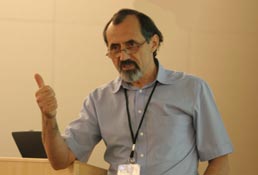|
AMERICAN
GO E-JOURNAL |
MEMBER’S
EDITION BONUS CONTENT: Kazunari Furuyama
explores Common Amateur Mistake 109 in the latest installment of his
Important, Fundamental Matters” series; have fun solving
Yilun Yang 7P's annual New Year's tsume-go problem. Non-members:
join the American Go Association and get all this great content with
every EJ! It’s
all just a click away! |
February 4, 2008; Volume 9, #7
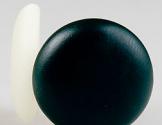
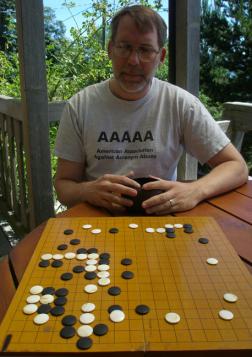
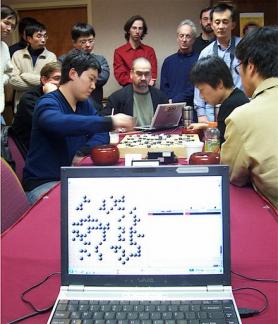
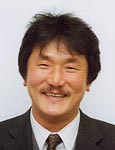
 LEE
CHANGHO SWEEPS KOREAN SIPTAN: Lee
Changho 9P (l) finished off Mok
Jinseok 9P on February 2nd to take the Korean
Siptan [Japanese: Judan] title by a score of 2-0. Mok is in
his upper twenties and has won two national titles and played in
several international events. He won more games in 2007 than any other
pro in the world: 93 with a winning percentage of 76%. However, he
rarely makes it into tournament finals or title matches. Lee, of
course, has won more international titles than anyone else and a huge
number of national titles. This was the third edition of the Siptan,
and Lee has won it twice.
LEE
CHANGHO SWEEPS KOREAN SIPTAN: Lee
Changho 9P (l) finished off Mok
Jinseok 9P on February 2nd to take the Korean
Siptan [Japanese: Judan] title by a score of 2-0. Mok is in
his upper twenties and has won two national titles and played in
several international events. He won more games in 2007 than any other
pro in the world: 93 with a winning percentage of 76%. However, he
rarely makes it into tournament finals or title matches. Lee, of
course, has won more international titles than anyone else and a huge
number of national titles. This was the third edition of the Siptan,
and Lee has won it twice.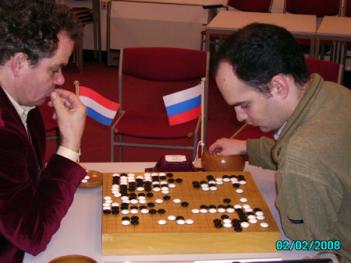 days
of qualifiers, 24 players made it into three parallel knock-out
quarter-finals. While Holland, Romania and Russia each had two players
in the finals, the pairings did not give any nationality a sure ticket
to the World Oza. The Russians, holding the highest ratings, were
expected to win, but the final between Dutchman Rob van Zeijst and
Christian Pop of Romania promised a close contest, as Pop is next to
van Zeijst in the European ratings. In a dramatic final round, Shiksin
-- the current European Champion -- was the first to be sure of his
title, with more points on the board as white against Burzo of Romania.
Next, Dinerchtein (r in photo) won a resignation from Frank Janssen 6d
(l) of The Netherlands. In the final top game, van Zeist fought back
after an initial set-back but still lost by a couple of points to Pop
(see below for a profile of Romania's Gheorghe Pãun, who is
largely responsible for go's boom in Romania). The youngest participant
was 14-year old Thomas Debarre 4d, an up-and-coming youngster from
France and the only other top teen besides Ilya Shiksin at this year's
Oza. Just 17, Shiksin won a place in the World Oza for Europe two years
ago and told the E-Journal "Two years ago I was very excited, now I
already got used to success." Also interesting was the first appearance
of Diana Koszegi 1P from Hungary in her first tournament in Europe
after her recent promotion. She did well until the semi-finals, when
she lost to Pop. Soon she will return to Korea, she told the EJ; she
wants to finish her University degree in Baduk there, but mainly looks
forward to competing in pro-leagues and getting stronger. Four games
each round were broadcast simultaneously by EuroGoTV on both KGS and
IGS, drawing audiences of up to 650 visitors at one time for one game.
Other games also drew audiences of hundreds, while Rob van Aurich
produced 13 tournament bulletins with games and results. Catalin Taranu
5P was present for game commentary and gave a large simul, losing only
two games.
days
of qualifiers, 24 players made it into three parallel knock-out
quarter-finals. While Holland, Romania and Russia each had two players
in the finals, the pairings did not give any nationality a sure ticket
to the World Oza. The Russians, holding the highest ratings, were
expected to win, but the final between Dutchman Rob van Zeijst and
Christian Pop of Romania promised a close contest, as Pop is next to
van Zeijst in the European ratings. In a dramatic final round, Shiksin
-- the current European Champion -- was the first to be sure of his
title, with more points on the board as white against Burzo of Romania.
Next, Dinerchtein (r in photo) won a resignation from Frank Janssen 6d
(l) of The Netherlands. In the final top game, van Zeist fought back
after an initial set-back but still lost by a couple of points to Pop
(see below for a profile of Romania's Gheorghe Pãun, who is
largely responsible for go's boom in Romania). The youngest participant
was 14-year old Thomas Debarre 4d, an up-and-coming youngster from
France and the only other top teen besides Ilya Shiksin at this year's
Oza. Just 17, Shiksin won a place in the World Oza for Europe two years
ago and told the E-Journal "Two years ago I was very excited, now I
already got used to success." Also interesting was the first appearance
of Diana Koszegi 1P from Hungary in her first tournament in Europe
after her recent promotion. She did well until the semi-finals, when
she lost to Pop. Soon she will return to Korea, she told the EJ; she
wants to finish her University degree in Baduk there, but mainly looks
forward to competing in pro-leagues and getting stronger. Four games
each round were broadcast simultaneously by EuroGoTV on both KGS and
IGS, drawing audiences of up to 650 visitors at one time for one game.
Other games also drew audiences of hundreds, while Rob van Aurich
produced 13 tournament bulletins with games and results. Catalin Taranu
5P was present for game commentary and gave a large simul, losing only
two games.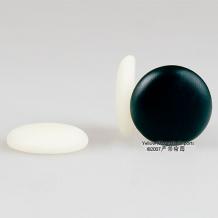 particular
luster. Local manufacturers produced stones with a similar appearance
for centuries, but during China's tumultuous conflict in the early 20th
century, the process was lost. Zhou En-lai ordered the production of
replicas in the 1970's, and the Yunnan Weiqi Factory was back in
business. (Click
here for a video in Chinese that shows glimpses of the
process; we also see Queen Elizabeth II receiving a set of yunzi stones
as a gift.)
particular
luster. Local manufacturers produced stones with a similar appearance
for centuries, but during China's tumultuous conflict in the early 20th
century, the process was lost. Zhou En-lai ordered the production of
replicas in the 1970's, and the Yunnan Weiqi Factory was back in
business. (Click
here for a video in Chinese that shows glimpses of the
process; we also see Queen Elizabeth II receiving a set of yunzi stones
as a gift.)